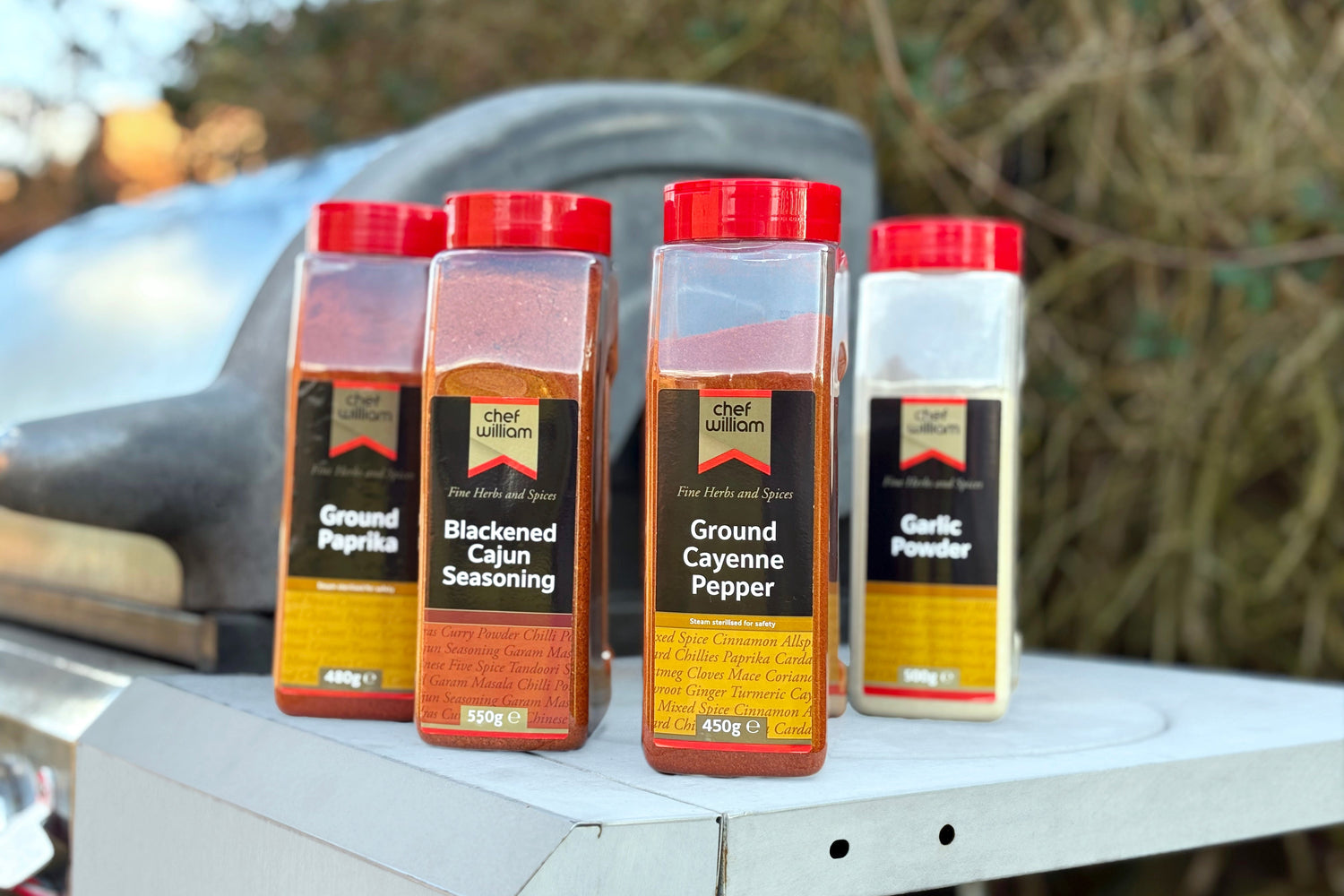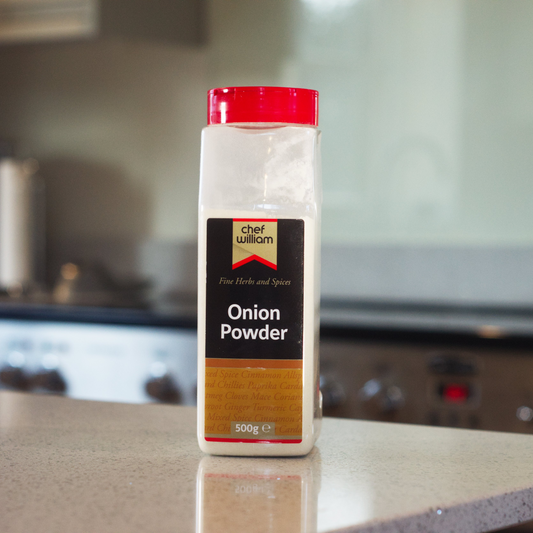
An Introduction to American Style BBQ
Share
What are they? How do you make one? And why you should make your own.
We’ve all had a classic British summer barbecue. Fired up the little Weber grill, cooked some sausages and burgers we got from the supermarket, and chilled out with a few beers.
It is classic, it’s simple and it’s sometimes exactly what you want.
But in America things are a little bit different, and increasingly the American way is making it’s way to our shores. On shows like Man v. Food we are seeing Brisket, Ribs and Pork Butt beautifully cooked to mouthwatering perfection with a deep black smokey crust and a perfect red smoke ring, and clearly the Brits have thought, I’d like some of that!
So what is the American way of doing BBQ?
Well that question is not exactly simple to answer. BBQ is anything cooked over fire. That’s a pretty simple definition. But the thing that really sets apart our stateside friends style is the commitment to low and slow cooking. Slathering up a giant chunk of meat in spices BBQ rub, slapping it on the coals and carefully cooking it at a low temperature until it transforms into juicy, deeply flavourful, smoky meaty perfection..!
When you put it like that you can see why it’s making it’s way over here, with restaurants like Bodeans, Smokestak and Texas Joe’s.
The interest in the American style has been growing in the UK for many years now and I’m sure many people have memories of BBQ spare ribs or pulled pork appearing in the supermarkets and many chain restaurants around the country. I remember as a treat, my mum getting spare ribs in a bag that you boiled and doused in sweet BBQ sauce. But this isn’t really the truth of American BBQ, because they lack a few key things:
- Fire...
- Smoke...
- And seasoning!
These are the key ingredients to give that real authentic US BBQ.
The US BBQ culture has given birth to many regional styles that all vary in many ways but whether you’re in Memphis, North Carolina, Kansas City, Texas, Kentucky or South Carolina, the common factor in all these various States is the use of BBQ rub.

But what is a BBQ Rub?
Well a BBQ rub is a combination of dry ingredients that you apply to the outside of the meat you are smoking to add flavour, tenderise and protect it from the harsh smoke that can leave the meat's skin burnt and bitter.
How does the Rub do this you might ask? Well first let me explain what is in a rub and then we can go through how it does the three key things I listed above.
A classic BBQ rub is a base of salt, then the addition of flavourful dried spices to add a kick and a colour to the meat. Sugar can also be part of a rub, but is not always.
The most classic rub would be a simple combination of salt, Paprika and Black Pepper. You would be hard pushed to find any rub that does not include these three ingredients.
The reason behind these being the basis of most every BBQ rub is that they all contribute a key factor:
- The salt helps to draw moisture out of the skin as well as forming a protective layer to ensure it does not burn.
- The Pepper ads a spice and a colour to the rub as well as its larger size particles creating a crunch exterior as it cooks.
- Finally the paprika adds a sweet and spicy flavour and helps to give the meat that all important red tinge that is associated with a perfectly cooked piece of BBQ.
These are the key ingredients but that does not mean they are the only options, of course. Many rubs will also add the likes of cayenne pepper, garlic and onion powder, for a deeper flavour profile.
Sugar is a much debated addition.
It caramelises, which of course adds a sweet flavour and deepens the maillard reaction (the browning effect of meat that adds a deep umami flavour), but sugar is susceptible to burn, so many pit masters avoid it in the rub and instead make a sweet sauce to accompany the me at.

Different Styles of BBQ
This of course varies across styles of BBQ. There are plenty of ways to slice a cake, and there are plenty of ways to rub a rack of ribs. The regional variety in US BBQ is a key element of why it’s such a rising and interesting food culture within the UK.
- Do you like big hunks of perfectly cooked and juicy meat without too many extras or additions?
Texas baby!
- Do you like sweet tangy spicy sauce drenched Pork ribs?
North Carolina is the place for you!
- Do you like mustard, gold and tangy accompanying your pulled pork sandwich?
Head on over to South Carolina!
- Are you indecisive or just a lover of everything meat and smoke?
Then Kanas City has a mix of all the regions, picking and choosing all the best options.
There are many off the shelf BBQ rubs that can be purchased, but we at MySpices believe that there are a few key advantages to making your own.
Making Your Own BBQ Rub
The key reason is you can control exactly what is in the rub, and customise it to your tastes. This freedom allows you to grow as a BBQ Pitmaster and gives you the control to experiment and find exactly what you want. With My Spices, we make this sort of experimentation easy as we sell our spices in large sizes (you need a lot of spices for 6kg of brisket) and in easy to use and store pots. Using a BBQ rub is a skill in itself! There are a couple of elements to how to use them well to enhance your BBQ, and a few things to be wary of as well.
Firstly you need to make sure the rub is even and not clumpy. It needs to shake well and coat any meat you’re applying it to in a single even layer. If you add too much you’ll have dense crunchy bits that are not all that nice to eat as the flavour is too strong. You also need to be careful of over applying as if you add too much the salt content will dry out the meat quite quickly.
A pro tip is to use a spice jar with a slotted top (like the Chef William ones My Spices sell) and sprinkle from at least a few feet above the meat. This will help coat it evenly and in a nice single layer. It’s a bit messy, so make sure to put some tin foil or clingfilm all over the table first so you can clean it up easily!
Should I use wet or dry meat for BBQs?
This is another point of debate, and is a matter of personal preference. I find that a few sprays of apple cider vinegar from a spray bottle (like the ones you use to spray plants) is a good way to help the rub adhere to the meat. I don’t personally like to use oil or BBQ sauce as some people do, as I think they add too much liquid and can make the rub immediately clump up.
Is the Type of BBQ I'm Using Important?
Another element to your BBQing to take into account, and one that I will have to go into in much deeper detail another time, is the type of BBQ you’re using. The key element is to try avoid too much direct heat on the rub as it will burn. If you’re using an offset smoker then this is not such a problem, but if you’re earlier in your journey and still using a round charcoal bbq with an indirect heat split (essentially putting all the coals to one side and the meat on the other), then it is probably worth laying the meat on a small sheet of tinfoil just to ensure the rub doesn't burn on the grill.
Of course an addendum to this is that you do want the rub to deepen and it will end up almost black in colour as it cooks. But this needs to happen over a number of hours to ensure that there isn’t a burnt flavour.

The blackness should be gradual absorption of smoke and not a direct burn.
A final note on rub application and preparation of the meat is to make sure you have trimmed any uneven bits of fat. It may feel like sacrilege to be cutting bits of a £100 6kg Brisket, but trust me you need to take any big lump fat lips or uneven bits away to make sure the meat cooks evenly. The lumpy bits will overcook anyway, so the sacrifice is worth it.
A great lesson in trimming meat can be found here from the King of Texas BBQ Aaron Franklin.
He is the king and better teacher than I’ll ever be.
Finally to round this off I thought I’d leave you with my personal recipe for BBQ rub. This is the rub I tend to go for as a base.
Josh’s BBQ Rub (to make 500g)
It’s not perfect but it’s a great first try and works on pretty much anything from ribs to chicken to brisket to lamb. It’s versatile and easy to assemble (especially if you use an empty My Spices jar to shake it up and sprinkle with uniform quality and ease), and it’s a great starting point for any budding Pit masters.
I tend to adjust this rub based on what I’m cooking and the feel I’m going for. For example I’ll add more paprika if I’m cooking chicken or I’ll leave out the onion and garlic powder for brisket. If I’m making ribs I often add a little sugar just to help caramelise.
Josh's BBQ Rub Ingredients
Try to match the grind sizes of the spices so the rub is even, but if you want a chunkier thicker rub you can use cracked black pepper, Garlic granules and onion granules.
I've made a bundle of my favourite ingredients, which you can find here!
Mix all this together and sprinkle evenly on your meat before you put it in the smoke for a great crunchy tasty crust. It’s self promotion of course but I always use an empty Chef William pot to mix rubs. They are large enough to contain 500g of spices and you can just dump it in the pot and shake it up and have it well mixed and ready to apply in seconds.
Making BBQ sauce our of BBQ Spic Rub
A good spice rub is also the basis of a great BBQ sauce! You can make this by mixing 100g of rub into:
- a tin of tomatoes,
- 100ml of Vinegar,
- 100ml of ketchup,
- 50ml of Mustard
- and adding 50g each of honey and sugar
then reducing to a thick consistency and blending.
Throw in some Worcestershire sauce as well, a good glue will really make it sing!
The reason we started My Spices was because I love BBQ and buying the Chef William pots through a friend who owned a restaurant made my life so much easier. I just thought it wasn’t fair I couldn’t just order these myself and that others couldn’t either, hence why MySpices is a thing today!
Thanks for reading!
Josh











